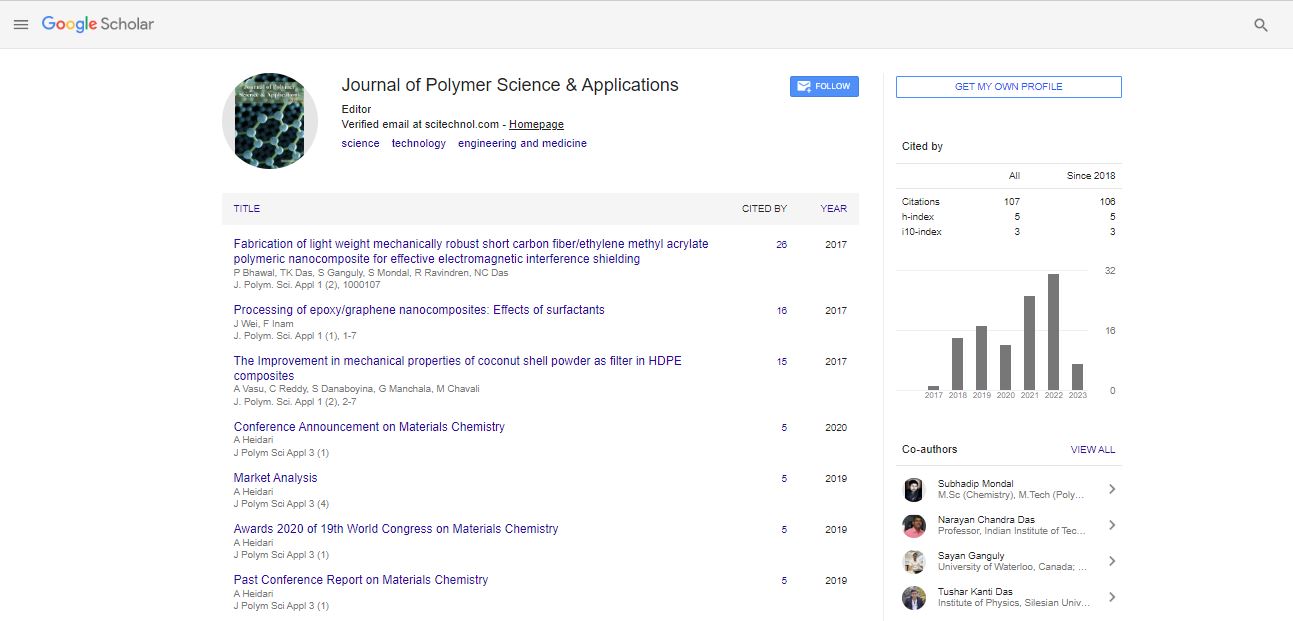Study on the interfaces of polymer solar cells
Zhicai He
South China University of Technology, China
: J Polym Sci Appl
Abstract
Polymer solar cells (PSCs) are promising solar energy conversion devices with the advantages of low cost, light weight and room-temperature solution processible. Though the power conversion efficiencies (PCE) of PSCs has been exceeding 15% recently, there are still some fundamental problems concerning the devices interfaces to be solved. In our works, we have been focusing on the working mechanism of water/ alcohol soluble conjugating polymer (polyelectrolyte, PFN) interlayer and the D-A interfaces in PSCs. By combining the scanning Kelvin probe microscopy (SKPM) and electron absorption (EA), we visualized a surface potential jump upon the incorporation of the PFN interlayer, and thus proposed a interfacial dipole on the interface, which reinforced the actual built-in potential across the device as a result of the superposition. Simultaneous enhancement in the open-circuit voltage, short-circuit current density and fill factor can be achieved by simply incorporating a thin layer of alcohol/water-soluble polymer as the cathode interlayer. In our recent work , the fundamental losses in VOC of PSCs based on narrow band-gap polymers was studied. And a correlation between the D-A interface phase separation and the band tailing of the device was established. By combining the analysis on the electrical, photocurrent spectral response characteristics, the band tailing and the concomitant increase in the splitting of the electron and hole quasi-Fermi levels were found to be responsible for the VOC.
 Spanish
Spanish  Chinese
Chinese  Russian
Russian  German
German  French
French  Japanese
Japanese  Portuguese
Portuguese  Hindi
Hindi 